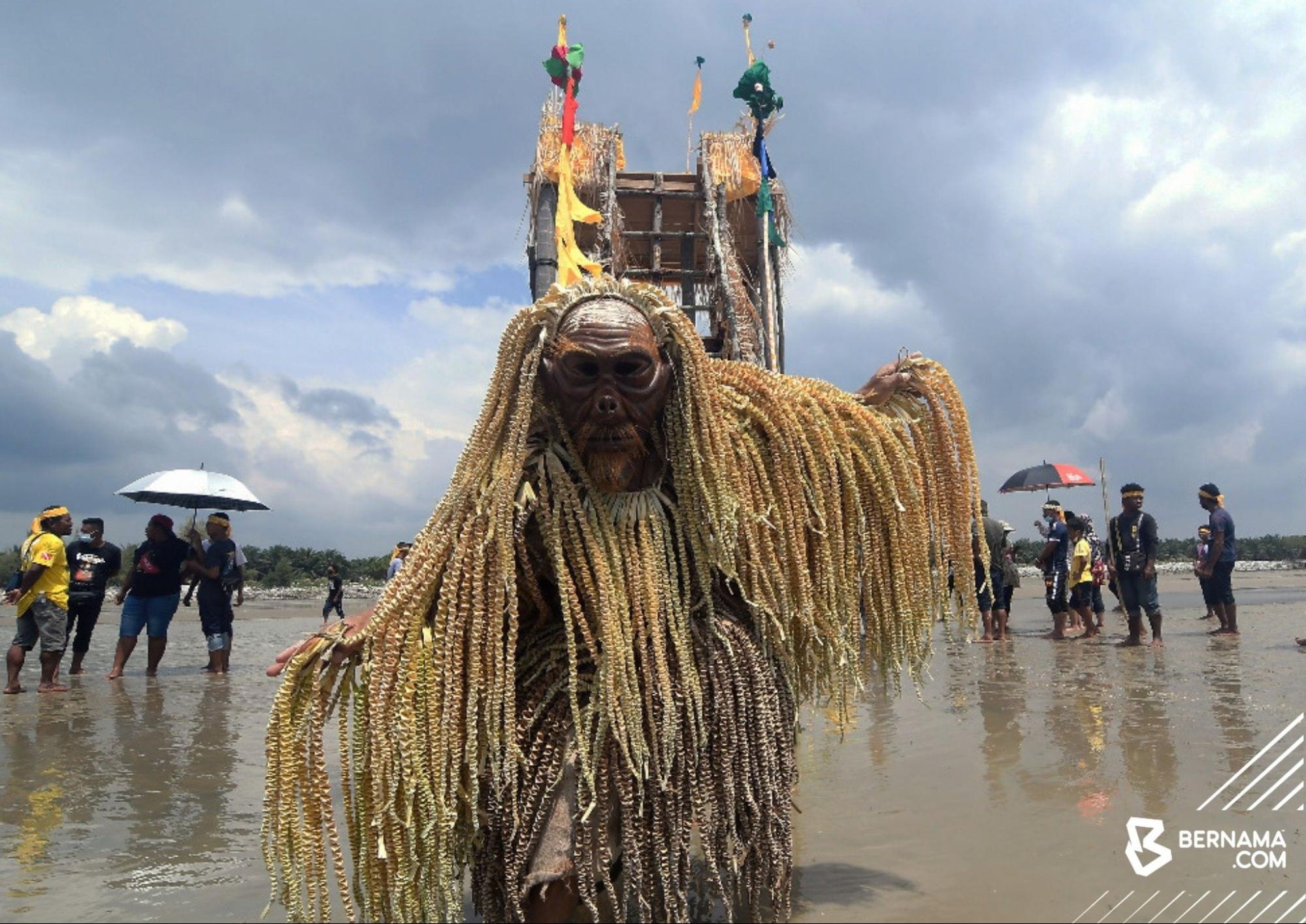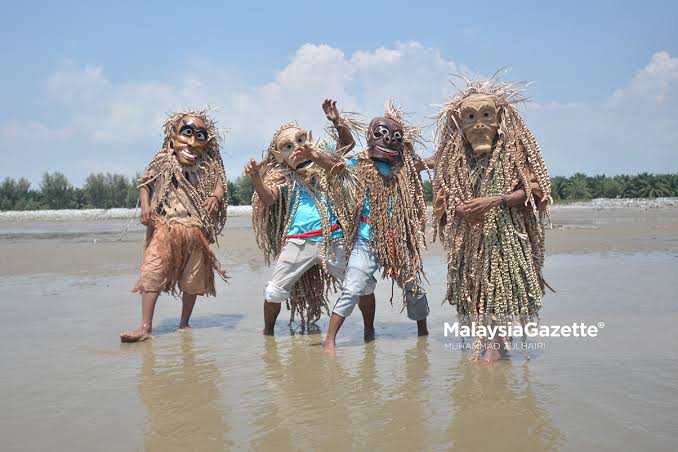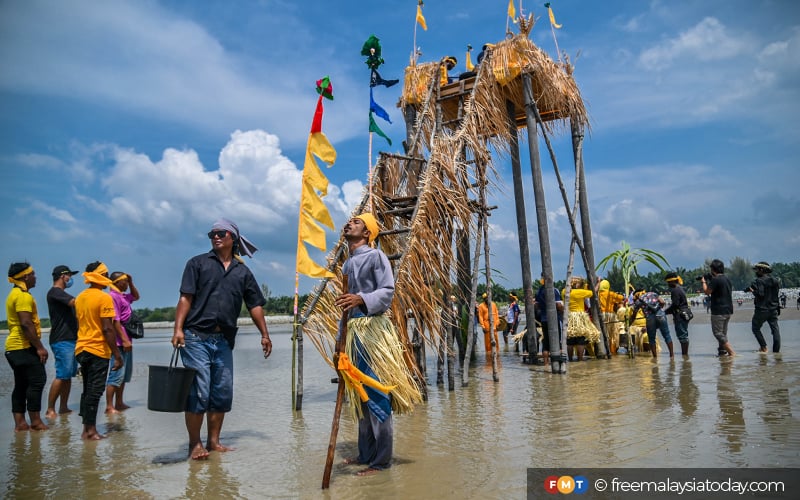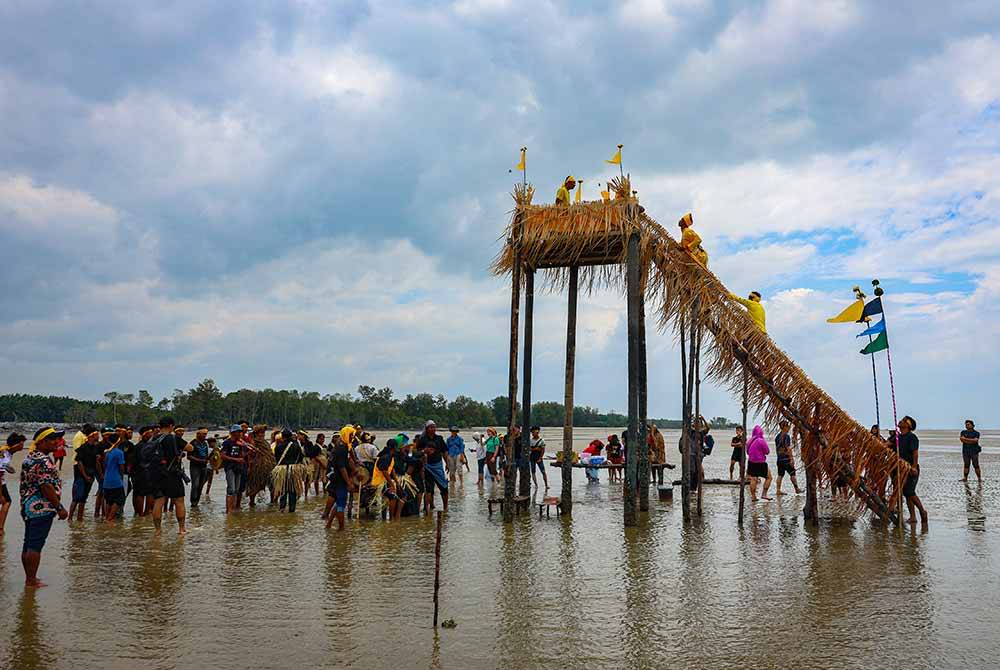Before Islam arrived in Tanah Melayu, many people at the time believed in Animism. For those unfamiliar with the term, Animism refers to the belief that objects, places, and living beings possess a distinct spiritual essence.
While it may sound like a rare or outdated belief, especially in the year 2025, Animism is still practiced today in several countries, including Malaysia.
Since Animism perceives certain objects or elements as being governed by spirits, rituals are often conducted to honour or seek protection from these entities. One such ritual is called Puja Pantai.
What is Puja Pantai?
 Image Credit: BERNAMA
Image Credit: BERNAMA
Directly translated to English as “worshipping the beach,” Puja Pantai is a ceremony held to honour the spirits believed to guard the sea.
According to reports, Puja Pantai is celebrated by the Mah Meri indigenous community residing in Carey Island, Selangor.
The ceremony is said to be performed to pray for protection, forgiveness, and better fortune from ancestral spirits. As the name suggests, the ritual begins with the Mah Meri people marching to the beach, led by a shaman.
Another report states that Puja Pantai is also practiced by fishing communities along the east coast of Peninsular Malaysia. It is believed that the ritual helps prevent sea spirits from disturbing fishermen and ensures abundant blessings.
When is Puja Pantai performed?
 Image Credit: Malaysia Gazette
Image Credit: Malaysia Gazette
Puja Pantai is typically performed every two to three years, especially when there are signs of disturbances from sea spirits, usually affecting fishermen and farmers.
How is Puja Pantai done?
The ritual is said to be initiated when fishermen agree that someone has experienced signs of impending disaster. A shaman, believed to have the ability to communicate with sea spirits, leads the ceremony.
There are several symbolic elements in the Puja Pantai ritual:
White buffalo
In Malay culture, the white buffalo symbolises strength and sacrifice. Its offering during the ritual represents a valuable and sacred gift to the spirits.
Pulut kuning (Yellow glutinous rice)
Traditionally used in ceremonies, Pulut Kuning symbolises gratitude, prosperity, and blessings.
Pavilion on a raft
This structure represents surrender or returning something to nature. As the raft is floated out to sea, it carries the hope that the spirits will no longer disturb the fishermen.
The Puja Pantai ritual can last from 3 days and 3 nights to 7 days and 7 nights, depending on its scale.
Ritual activities
 Image Credit: FMT
Image Credit: FMT
During the ritual period, fishermen refrain from going out to sea. Instead, they perform various activities at the beach to please the sea spirits, who are believed to have come ashore.
Daytime activities include kite-flying and spinning tops (gasing), while nighttime performances feature shadow puppetry (wayang kulit), traditional makyung theatre, and dikir barat.
The climax of Puja Pantai
 Image Credit: Sinar Harian
Image Credit: Sinar Harian
The climax of the ritual occurs on the final morning, when a white buffalo is sacrificed. Other offerings such as Pulut Kuning, eggs, betel leaves, areca nuts, and blessing powder are placed on a pavilion raft and floated out to sea.
Even after the ritual concludes, fishermen are only allowed to return to the sea three days later.
Would you ever want to witness a Puja Pantai ceremony in person?
Featured Image Credit: BERNAMA, The Star






